National Historic District serves as a monument to the hard working miners who built Fairbanks.
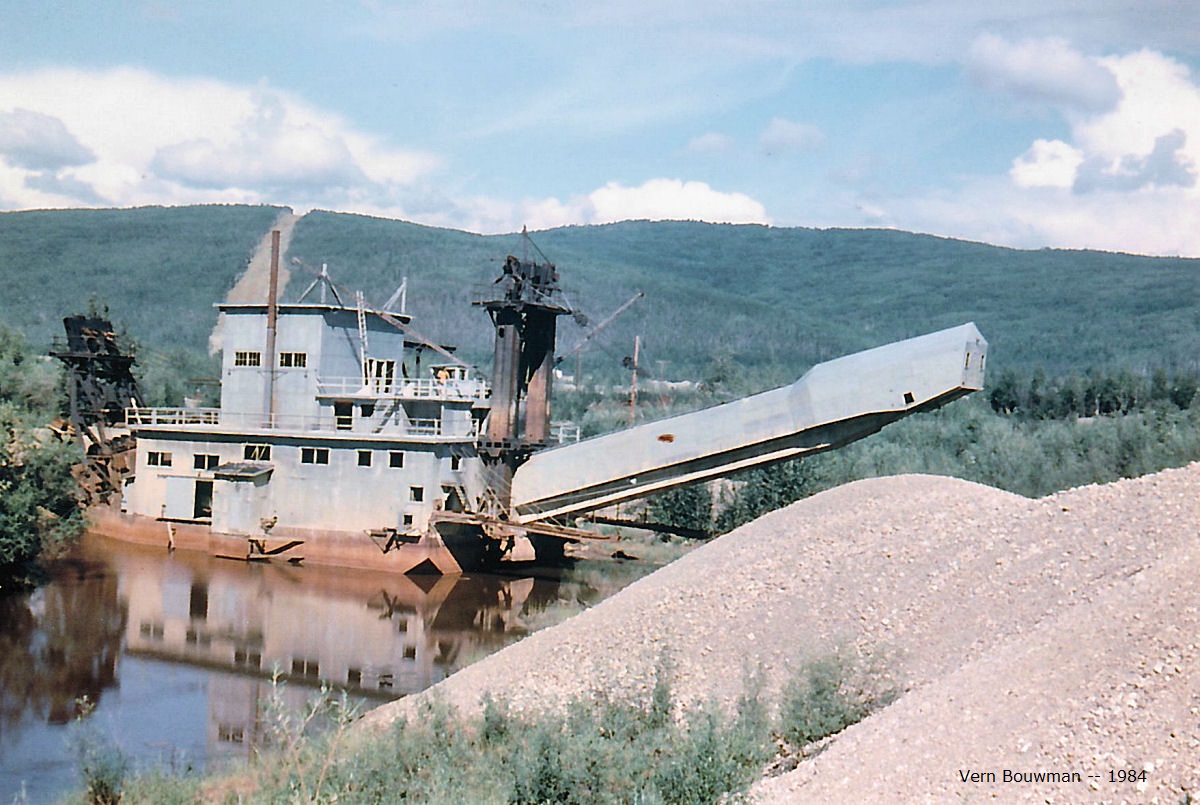
"I can't believe this dredge is still there" - 27 years later.
The dredge is described as either a
floating workhorse or a mechanical gold pan.
Gold Dredge No. 8 extracted millions of ounces of gold from
the frozen Alaskan ground.
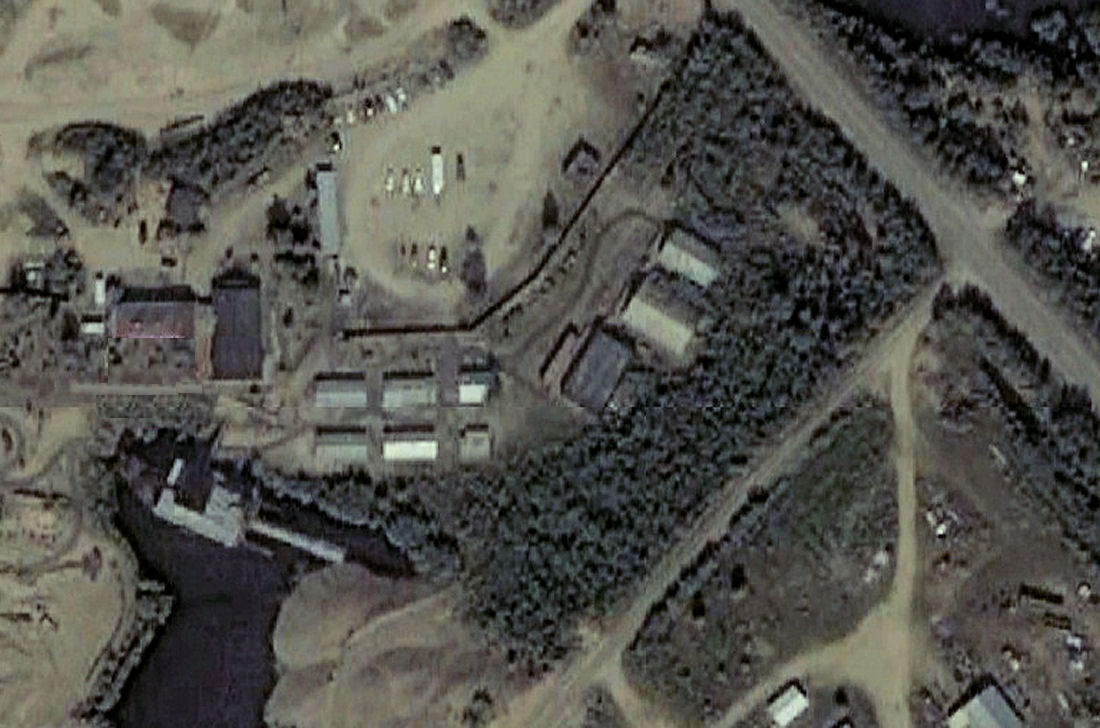
Dredge No.8 was manufactured in 1927-28 by Bethlehem Steel Company,
Ship Building Division.
The equipment was shipped from
Pennsylvania by transcontinental railroad and
by ocean-going barge to the
Alaskan Railroad to be assembled in early 1928 just west of Fox,
Alaska at the head of the Goldstream
Valley.
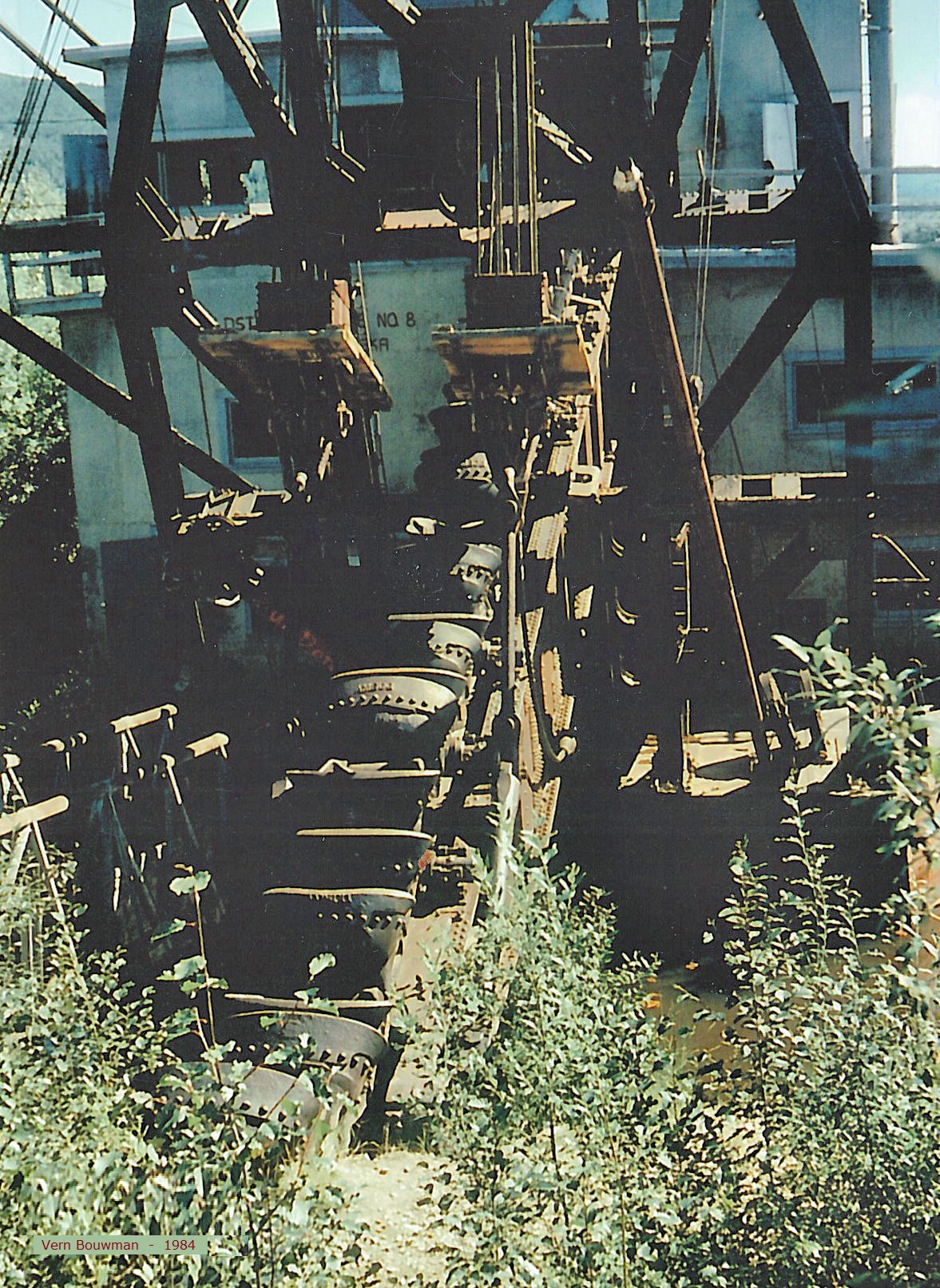
Gold Dredge No.8 has a 43 foot 9 inch high bow-gantry which supported
the belt-driven bucket line,
with its 68 manganese steel buckets,
each with a capacity of 6 cubic feet and weight of 1,583 pounds.
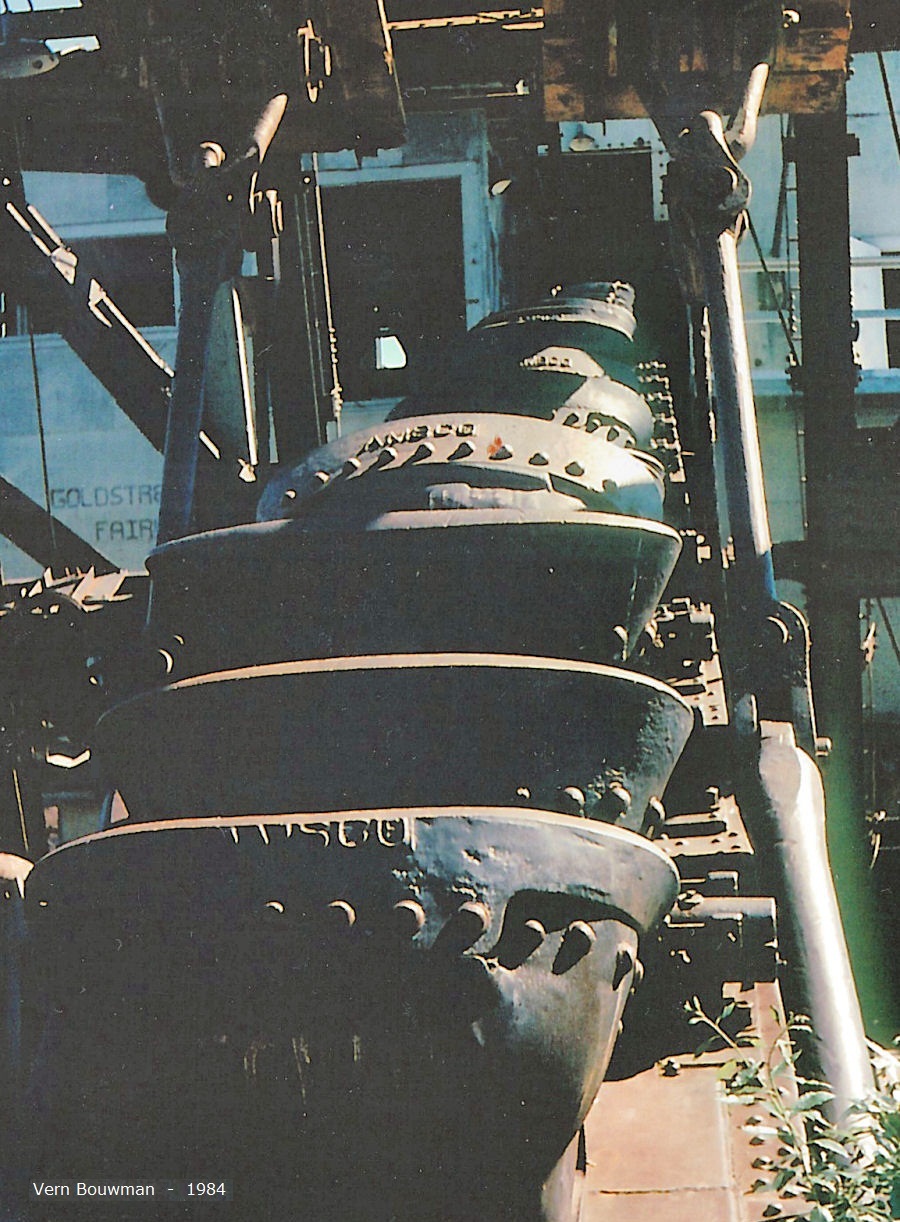
The buckets were mounted on a steel digging ladder which measured in excess of 84 feet.
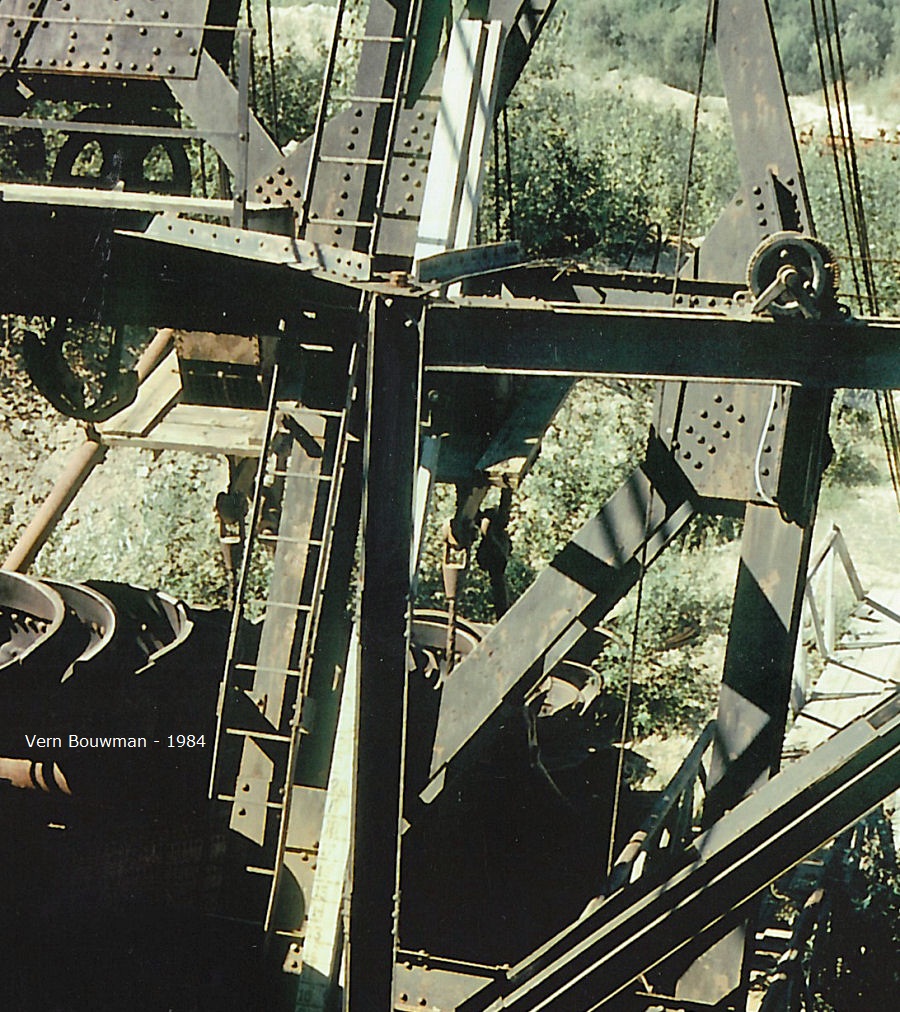
The bucket line discharged gravel in to a dump-hopper to a belt-driven
trommel-screen,
where perforations ranging in size from 3/8 to 1-5/8 inches,
sized the gravel.
During the process, an occasional large nugget would stick in the
screens as the dredged material traveled
down a gentle decline. In the trommel, the relatively heavy gold
fell through the screens;
the rocks and gravels passed onto a conveyor belt to be
discharged.
Nozzles inside the trommel drum were used to wash the gold from the
gravel
before it was carried by a steel-reinforced conveyor belt to the
tailing pile behind the dredge.
This process resulted in removal of approximately 97 percent of
the gold from the rich gravels.
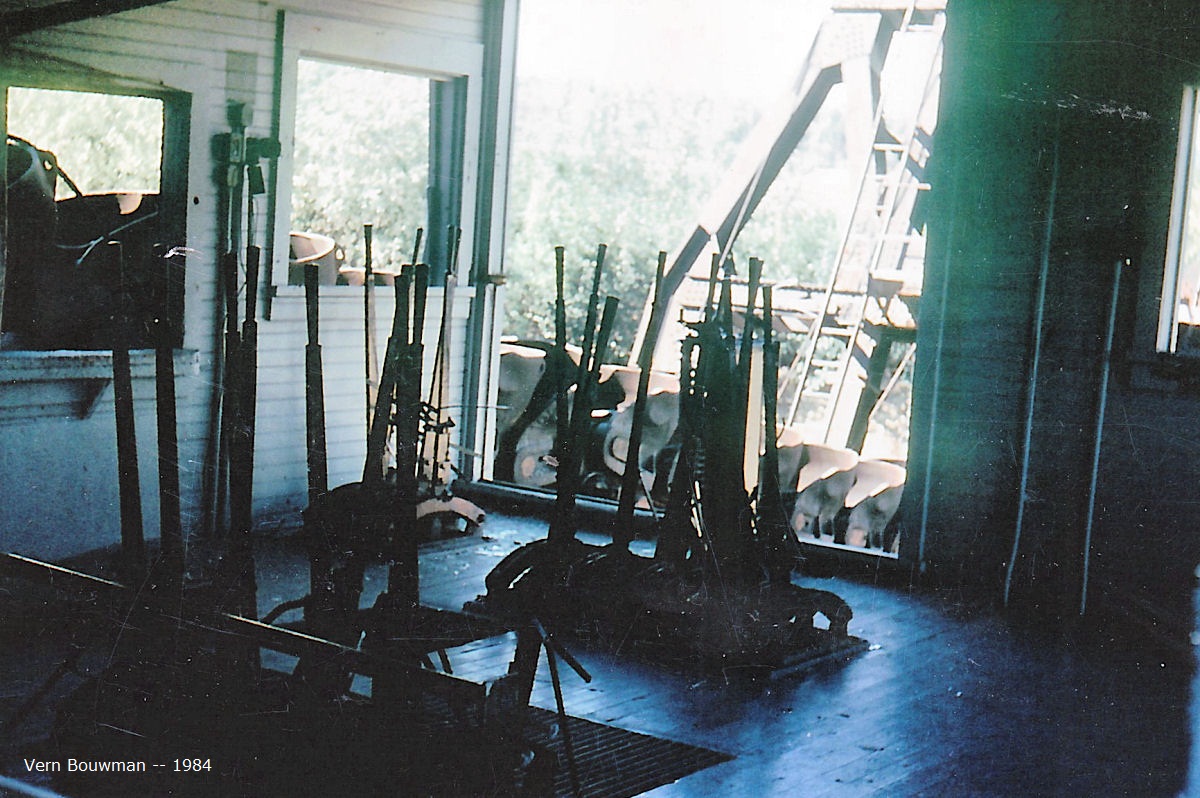
The dredge is located across from the Chatanika Lodge. See: MAP
